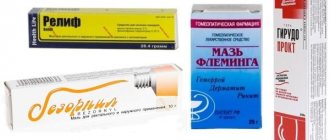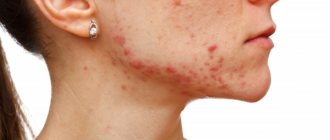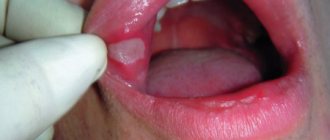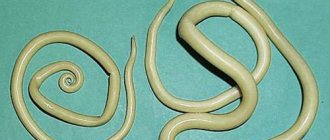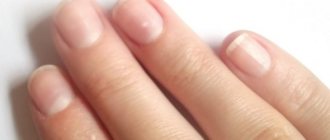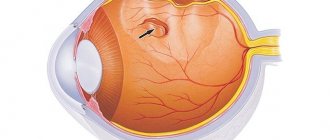A callus is the appearance on the surface of the skin, which is often subject to friction, of a whitish or grayish area of keratinization, with a depression in the center, painful when pressed. With the help of such formation, nature protects the skin from mechanical injury in those locations that are most susceptible to this. Most often, calluses with a core appear on the foot - in the heel area, on the toes or between them. Rarely can such a skin defect be found on the hands, and this is typical for representatives of some professions.
It is quite difficult to remove the formation at home due to the presence of a rod inside the dry callus. You can try to remove it yourself only if it has formed recently. It is best to remove an old callus from a dermatocosmetologist or podologist: this way you are guaranteed to get rid of the disturbing defect without damaging the surrounding tissues.
What is a callus?
This formation is located in the upper layer of the skin - the epidermis. This layer is a "brick wall" with a wide layer of cement-like substance on top and a "roof" on top. “Bricks” are living skin cells; they are born in the bottom row and over time rise to the top, replaced by newborn epithelial cells. As it rises, the nucleus and organelles are lost, the “brick” turns into the cement-like substance eleidin, and then becomes the dead scale of the uppermost layer. This process is called “keratinization.” It is also called keratinization due to the presence of keratin protein in the last layer - the main substance that first encounters mechanical irritants, chemical elements and microbes, preventing them from entering the lower layers of the skin.
Normally, the cells of the lower layer reach the top in 28-72 days. After this, they fall off, and along with them go particles of dirt and those substances that the body removes through sweat (ammonia, some medications and salts).
But if a certain area of the skin is constantly exposed to pressure, if it constantly rubs against clothing, or if a special type of virus has settled in it, preventing dead cells from exfoliating in time, dry callus (hyperkeratosis) appears. If the processes of keratinization are rearranged so that under a large layer of unexfoliated cells a cone of cartilage-like density appears, which with its apex is directed into the deep skin layers, a callus with a core appears. At the same time, the core compresses the blood vessels of the skin, impairing its nutrition and promoting even greater growth of the cone. It will not be possible to remove such a skin defect by simply removing the layer of dead cells; you need to get rid of the core.
Structure of the callus
Types of painful calluses
There are different types of tumors on the feet that cause unpleasant painful sensations. They are distinguished by symptoms, localization and method of elimination. Let's consider the main types of formations that bring the greatest discomfort.
- Water calluses are the most common; visually they look like blisters filled with liquid. They are formed by friction and compression; with any mechanical impact, the callus begins to hurt greatly. Unpleasant sensations increase significantly with the development of the inflammatory process. Such a blister swells, turns red, and a local increase in temperature is possible.
- Core calluses are neoplasms with a dense keratinized layer of skin and a core that grows into the deep layers of soft tissue and can even touch nerve endings, which is why the callus hurts and aches even during rest. There may be a feeling of itching and burning when walking. Most often they form on the sole of the foot, toes and between them.
- Corns look like areas of thick, rough skin with a yellowish tint. The tissues burst, forming cracks that become deeper without treatment. Most often, corns appear on the heels and base of the big toe.
- Bunions are called calluses that form on the bones of the big toes. The cause is the incorrect selection of shoes. Poor quality and tight shoes put pressure on the toe joint, causing discomfort that is difficult to get rid of. If you don't take action right away, this painful callus may require surgery.
- Calluses (spurs) usually occur on the heel. They cause acute pain due to their localization: the tumor forms in bone tissue, and not on the skin. That is why difficulties arise in its treatment; to remove it, you most often have to contact a surgeon.
Types of diseased calluses
Reasons for formation
As already mentioned, most often hyperkeratosis develops on the legs - in those places that are most susceptible to friction. Callus occurs due to:
- wearing uncomfortable (narrow, flat-soled, non-breathable, constrictive or too loose) shoes;
- transferring the entire body weight to the toes, which happens when putting on high-heeled shoes;
- frequent walking barefoot;
- entry of a foreign body (wood chips, metal shavings, grains of sand, piece of glass) into the skin, which the skin tissue tries to delimit from healthy areas;
- infection with a dermatotropic (one whose effect is manifested in the skin) virus. Most often it is the human papillomavirus;
- fungal infection of fingers and nails.
Calluses on the hands appear when:
- frequent or prolonged use of a knife;
- writing for a long time with a pen that the person is holding incorrectly;
- frequent work with garden tools;
- playing sports: hanging on horizontal bars, exercising on rings or uneven bars;
- foreign body entry;
- contact with warts, papillomas, resulting in infection with the papillomatous virus;
- fungal infections of the skin of the hands.
The chance of developing calluses with a core is increased by non-compliance with safety precautions, when manual work is done without gloves, wearing wide socks or loose insoles that can wrinkle inside the shoes. The risk group also includes people with impaired blood circulation in the extremities, suffering from diabetes or having problems with the immune system.
Callus most often appears as a result of wet callus, the so-called “dropsy”.
Etiology
The growth on the feet is associated with various reasons, but in most cases the deviation occurs due to wearing incorrectly selected shoes. Therefore, the problem often occurs among the fairer sex, who prefer to wear narrow high-heeled shoes. In this case, the load on the foot increases significantly, which increases friction and calluses form. Other common causes of foot lumps include:
- fungal foot diseases;
- excess weight, which increases the load on the feet;
- improper circulation of blood in the lower extremities;
- increased sweating on the feet;
- flat foot;
- congenital or acquired foot deformity.
Symptoms of the disease
You can think about the fact that a person has developed hyperkeratosis with a rod in the case when placing the leg in some position becomes uncomfortable and painful. In this case, the pain is not sharp, piercing, as in the case of a splinter, but dull.
What does a callus look like?
This is an area of light skin, with the same skin pattern as the surrounding skin. It has a heterogeneous structure, a shape close to round, and a “pit” in the center. Upon closer examination, the formation resembles a plug inserted into the skin; when pressed it is painful and can cause gait disturbance. Unlike warts, it does not bleed even with strong pressure and does not form in one location in the plural.
Favorite localizations:
- on the heels;
- on the toe: mainly on the little finger on the outside, as well as between the 1st and 2nd fingers, 4th and 5th fingers on the inside;
- on the palms;
- on the fingers.
How can I help at home?
Treatment of calluses at home is used if the formation is small in size or causes pain, and it is necessary to remove them urgently. It is recommended to remove the subcutaneous growth with the stem with the help of a specialist. Traditional therapy offers the following recipes for getting rid of calluses on the foot:
- Preparation of an ointment based on celandine requires the juice of a natural component, which is mixed with petroleum jelly or butter. The ratio must be 1:4. The addition of carbolic acid helps extend the shelf life of the ointment.
- Using compresses that consist of figs. First you need to steam your leg, and then apply a piece of chopped fig and fix it with a plaster. The product can be twisted in a meat grinder or crushed in a blender.
- Potato compress. The medicinal product is peeled and ground into a paste using a grater or meat grinder. The resulting paste is applied to the damaged area of the foot and secured with a bandage or gauze. After 2 hours, you need to change the compress to a new one. This method allows you to eliminate painful sensations.
- A compress made from burdock root, which must first be crushed. The healing agent is applied to the corn and left overnight. Continue the procedure until the formation disappears.
Diagnostics
Treatment of callus begins after a dermatologist has established an accurate diagnosis, differentiating the disease with a plantar wart or a malignant formation. The diagnosis is usually made by the appearance of the skin defect. At the same time, a blood test is carried out to determine the level of glucose, glycosylated hemoglobin (if diabetes mellitus is not diagnosed), antibodies to the human immunodeficiency virus and papillomatosis. These studies, provided that subsequent treatment for such conditions is prescribed, make it possible to more effectively combat core calluses.
Main types
Calluses are a kind of protective reaction of the body, as they prevent the occurrence of more serious problems. They can be dry or wet. The wet type is a bubble that forms from wearing uncomfortable shoes or when working with tools. They can occur on almost any part of the body, regardless of age. Lymph is located inside. They may also indicate a violation of blood glucose levels. Many doctors recommend piercing them, as the fluid inside can lead to infection.
A dry callus occurs after prolonged pressure on the foot area. Often a similar problem occurs with flat feet. In this case, the callus is located under the toes.
Treatment
A dermatologist, podologist or cosmetologist should tell you how to remove a callus based on an examination and examination for fungal flora and papillomatosis viruses. If the formation is old or caused by an infectious agent, there is no question of folk or independent treatment, because this can only spread the infection. In a situation where a person notices hyperkeratosis at the initial stage, and based on appearance the doctor denies HPV, it is possible to treat the callus at home. The latter includes the use of pharmaceutical, folk remedies or a combination thereof.
Removal of hyperkeratoses with a rod by a specialist
To quickly and painlessly get rid of calluses, even if they are old, professionals use one of three hardware types of treatment. It is carried out in cosmetology offices and dermatology clinics, as well as in a podiatrist’s office.
Hardware pedicure
This is a method in which, under visual control, the area of hyperkeratosis is “drilled out”. The skin of the foot or hand does not require preliminary softening in the bath, and no other preparation is needed.
After disinfecting the callus with a medical antiseptic, the dermatocosmetologist takes a special device, which is essentially a drill, selects the cutter of the required size and begins to remove the callus.
The procedure is performed without local anesthesia, as it is painless. The maximum that the patient can feel is a burning sensation that appears as a result of an increase in temperature in the treated tissues. It passes within a couple of seconds after processing stops, after which it can be continued again.
Video: Removing callus
Video: Pedicure. Hardware removal of calluses in a beauty salon
Read more about this manipulation in the article “Features of a medical pedicure.”
Laser removal of callus
Laser callus removal is the optimal treatment method. It is carried out without preliminary preparation of the patient and is suitable for removing both old formations with a core, and if the callus has just formed. Ideal for cases where the callus is the result of infection.
Laser therapy is carried out with a fractional or non-fractional laser. In the first case, the light beam, whose task is to evaporate pathological structures, will be supplied in separate beams, creating microdamages. A non-fractional laser involves delivering a laser beam in one continuous spot. The latter is used more often.
A callus with a core can be removed with an erbium laser, but more often a carbon dioxide installation is chosen for this purpose, allowing the beam to penetrate deep into the skin and evaporate the liquid from the core of the formation. Healthy tissues remain intact.
After the procedure, a dry black-brown crust remains at the site of exposure, which should fall off on its own within a week. Independent removal of the scab is fraught with infection of the postoperative wound and the subsequent occurrence of scarring and hyperpigmentation.
Laser removal is the optimal remedy for core calluses. It has the following undoubted advantages:
- the procedure is low-painful and low-traumatic;
- the high-temperature laser beam kills any microbes in the treated area;
- the device can be adjusted so that the depth of exposure is completely controlled: healthy tissues will not be injured;
- high temperature coagulates blood vessels, so the procedure is bloodless;
- as a result, a crust is formed, tightly fused with the surrounding tissues, the area under which cannot be infected unless the crust is forcibly removed;
- immediately after the procedure, the wound will be treated with a special local remedy; a waterproof plaster will be applied to it - and the person can return to everyday activities;
- the laser guarantees the removal of callus in 1, less often – 2 sessions;
- dry callus in this location will not recur;
- scars after removal are formed in rare cases, in persons prone to this.
Video: Removing calluses and corns with a laser
Cryotherapy
The method involves removing callus with liquid nitrogen. It is also carried out in a cosmetologist’s office and does not require prior preparation.
At the beginning of the procedure, the patient needs to lie down on a couch, where the affected area will be treated with an antiseptic and numbed with lidocaine. Next, a cotton swab is applied to the defect to be removed, which is previously dipped in a solution of liquid nitrogen. Nitrogen acts with cold, from which the callus gradually dies.
Cryotherapy is inferior in effectiveness to laser treatment: the depth of its impact cannot be programmed; after treatment, an area of wet necrosis is formed, which can become infected. But this type of removal is indispensable if the dry callus extends several centimeters in width. Then, in several sessions of cryotherapy, it can be removed, providing good conditions for tissue healing, without tension.
How to remove a callus with a core at home?
Treatment at home is effective only for shallow calluses. To do this, you need a three-stage effect, which is repeated every day until both the callus and its core are completely removed on their own:
- Steaming in a bath.
- Applying a product to the area with callus that will dissolve the bonds between the layered dead cells (keratolytic drug).
- Removing the drug, applying an emollient cream.
Stage 1
Steam your feet in one of the following solutions:
- Soap and soda. For 5 liters of water at a temperature of about 40°C you need 10 teaspoons of soda and 2 tbsp. l. grated laundry soap. The limbs are steamed for about 30 minutes, after which they need to be wiped and ointment for core calluses applied on top: “Super Antimozolin”, “Vitaon”, “Nemozol”.
- Mustard: dissolve 2 tbsp in 5 liters of hot water. l. mustard powder.
- Starch: for the same volume of water you need 3-4 tbsp. l. starch.
- Saline: 4 tbsp required. l. sea salt.
Dry your feet, clean your feet with a pumice stone or a metal file, but not with a blade.
Stage 2
Keratolytic drugs are used here. An excellent product in terms of price/quality ratio is Salipod. This is a drug based on salicylic acid and sulfur, the main task of which is to penetrate deeply and dissolve the bonds between unexfoliated dead skin cells. In addition, salicylate provides anti-inflammatory and antimicrobial effects. The patch also contains rosin, which has an additional antiseptic effect, and lanolin with rubber, which soften the skin.
Salipod in the form of a therapeutic narrow plaster is applied to the skin, after which it is fixed with the usual plaster included in the kit. The exposure time is indicated in the instructions. After you feel that the hyperkeratosis has softened, its “cap” can be slightly cut off with scissors. Do this step by step until the entire rod comes out.
At this stage, you can use the following pharmaceutical products:
- drug based on salicylic acid “Nemozol”;
- "Mozolin" product;
- Enzi salicylate-based patch.
You can also use folk remedies:
- celandine juice (or pharmacy medicine “Super-Clandestine”);
- a paste of onion or garlic, which is applied to the steamed calluses and secured with a bandage;
- “flatbread” made from grated raw potatoes;
- propolis;
- aloe leaf cut in half.
Stage 3
After scrubbing off the softened areas, apply an emollient to clean and dried skin. This could be an ointment purchased at a pharmacy containing dexpanthenol (“Bepanten”, “Dexpanten”), a “Home Doctor” type product for feet, ointments from the “Oriflame”, “Faberlik” or other lines that are positioned as emollients and containing vitamins A , E or D-panthenol. A very effective product that you can prepare yourself by taking baby cream and oil vitamin A and mixing them 1:1. It is applied after each keratolysis procedure performed at home.
Prevention
It is much easier to prevent the appearance of painful calluses than to spend time and money on their treatment. To do this, you need to follow simple but effective rules:
- Choose the right shoes. It should fit in size, have a low, stable heel and be made from natural materials.
- Maintain good hygiene. Wash your feet every day, wear clean and intact socks, if you sweat excessively, use special products: baths, deodorants, powders;
- Regular hardware pedicures also reduce the risk of calluses;
- Watch your health; the frequent appearance of calluses can sometimes indicate problems in the body. Be sure to consult your doctor and determine the reasons for the appearance of growths.
Be careful about your health. If you have a callus on your foot, you need to immediately take measures to eliminate it. To do this, you may have to see a doctor or traditional treatment will be sufficient. It is possible to reduce acute discomfort at home; to do this, it is necessary to identify and eliminate the causes of the callus. Preventive measures will help avoid the appearance of new growths.
Declension
How the word “corn” and “calluses” is written and changed when declined:
Name (what?): callus, calluses
Rod.p. (no what?): calluses, calluses
Daten.p. (give to what?): calluses, calluses
Vin.p. (see what?): callus, calluses
Tv.p. (to be proud of what?): calluses, calluses
Sentence (think about what?): about calluses, about calluses
Folk remedies
Traditional recipes for the treatment of calluses also show high effectiveness. Many contribute to softening. Before making a compress or mask, you need to steam your feet with the addition of the following components:
- soda with soap;
- tea tree oils;
- weak solution of potassium permanganate;
- hydrogen peroxide.
After steaming, apply a compress to the affected area overnight. Here are some effective compresses:
- chopped aloe leaf to release juice;
- a piece of lemon;
- grated potato gruel;
- a slice of fresh onion;
- crumb of bread, generously moistened with vinegar;
- tomato paste.
After removing the bandage with compress in the morning, you need to steam your foot again and remove the softened callus. Applications are made until complete healing.
https://youtu.be/owTP6WTcWfo
Summer calluses and how to deal with them
Summer is a testing time for our feet. After long walks in wonderfully light shoes, we are faced with not at all wonderful pain. We limp to the pharmacy for plasters, wailing along the way: “Well, again, these calluses have ruined all the romance.” So why do they appear, why are they dangerous and how to get rid of them?
photo i2.wp.com
Shoes aren't always to blame
First, it’s worth understanding the root causes of calluses. Are unworn sandals the only ones to blame for our torment?
— There are four main factors in the appearance of calluses,
— says
dermatovenerologist Olga Rabchinskaya. — Incorrectly selected shoes, pathological conditions of the foot (transverse or longitudinal flatfoot, valgus deformity, hammertoe, rider toe), general condition of the body (excessive sweating of the feet, obesity, diseases of the musculoskeletal system), professional activities (dancing, sports ).
It happens that a person wore sandals last summer and it seemed to him that nothing could be more comfortable than these shoes. I put it on this year - and that’s it, the pleasure was gone.
- Actually, it shouldn’t be like that,
- says our consultant.
- This is most likely due to incorrectly selected shoes.
If the sandals are made of artificial materials, then the foot may simply become sweaty and this will increase the pressure on it. If a person does not change shoes and continues to wear the same ones day after day, then abrasion first forms, then callus forms, and ultimately a callus. But there is no direct connection between calluses and changing shoes. Most often, it’s the other way around: unworn shoes are the cause of calluses and calluses. Let's figure it out
So, what kind of callus do you have? Or maybe it’s not a callus at all, but just abrasion or callus?
— Abrasion is superficial damage to the outer covering of the skin. Appears due to friction and pressure from shoes. May be accompanied by the formation of bubbles with transparent contents,
— Olga Rabchinskaya brings things up to date.
- While callus is a superficial thickening of the skin in the area of prolonged mechanical pressure, it does not have clear boundaries and severe pain.
It turns out that in the vast majority of cases we are faced only with abrasions and calluses. But what then are calluses?
— A callus is a thickening of the deep layers of the skin,
- comments the specialist.
— Appears due to prolonged mechanical pressure.
It looks like a clearly defined cone-shaped formation. May have a deep root (callus). It is this rod that causes quite painful sensations. It becomes difficult for a person to walk and begins to limp, even if the shoes are the right size. Shall we cut?
What do we do when we feel the first discomfort from the strap of new sandals? If we can endure it, then we endure it to the last. If it becomes unbearable to step, we go to the nearest pharmacy and buy a plaster. is that enough?
- It is necessary to take care of scuffs,
- warns Olga Rabchinskaya.
“They need to be treated with antiseptics, dried with aniline dyes, and sealed with bactericidal or gel patches.
Shoes are not a sterile environment in any case. Bacteria getting on the abrasion can provoke a purulent process. If we talk about calluses, they also need care. The longer the calluses are on the surface, the more the process worsens and the more time it takes to return the feet to their original state. Unfortunately, before seeing a doctor, many actively self-medicate. Calluses are cut off, cauterized, and baths and lotions are made. How effective is it?
- No one will forbid you to cut off the callus,
- Olga Rabchinskaya notes,
- however, the effectiveness of the procedure is questionable.
For example, people often cut out and burn calluses. This brings only temporary relief, because not the entire callus is removed, but only part of it. A doctor's help is needed here. You need to contact podologists or dermatologists and surgeons. If it is a callus, then you can cut it off. Each of us uses pumice stones and special foot care devices. Among professional procedures, hardware pedicure and foot peeling are effective in this case. Healing prognosis
Depending on the type and characteristics of the body, calluses heal differently.
— The usual one, formed due to uncomfortable shoes, is removed once. A person chooses comfortable shoes, and the problem disappears. As for the callus, everything is very individual,
- Olga Rabchinskaya emphasizes.
— It is not always possible to get rid of it at once; it may take from 2 to 6–8 procedures.
If we are talking about calluses and calluses that form due to foot deformation, you should go to an orthopedist, he will recommend special insoles. AT-RISK GROUPS
Diabetics (with uncompensated diabetes mellitus).
Legs are their weak point. An untreated callus often leads to an ulcer.
Suffering from gout.
Due to the underlying disease, small joints suffer in such people and lumps form in the form of uric acid deposits. If you aggravate these troubles with calluses, then you can easily get an infection.
ON A NOTE
To ensure that your feet suffer from calluses as little as possible, you should follow a few simple rules.
• Have several pairs of shoes for each season.
• Wear shoes made from natural materials.
• Avoid long walks in heels.
• Do gymnastics to strengthen the arch of your feet.
• If you have orthopedic problems, contact a specialist in a timely manner.
WHAT DOES PHARMACIES HAVE?
• Callus patches (salipod) and hydrogel.
• Antiseptics (chlorhexidine, miramistin, hydrogen peroxide).
• Aniline dyes (fucorcin, brilliant green).
• Pharmacy ointments and creams, which contain urea and salicylic acid.
• Orthopedic and gel insoles.
Elizaveta HUNGER.
What not to do to relieve pain
In order for the treatment of calluses to occur correctly and as effectively as possible, you should not:
- unnecessarily load areas with corns on the feet,
- continue to wear the shoes that caused the problem,
- cover the damaged skin with a simple adhesive plaster, which injures even more,
- trying to open a bubble with liquid, which increases the risk of infection,
- remove the growth with the rod yourself (this can only be done by a specialist using special devices),
- delay contacting a doctor if the wounds on the feet do not heal for a long time and hurt,
- neglect the rules of personal hygiene and use non-sterile devices for treatment.
Callus on foot
Every person at least once in his life has encountered such a problem as a callus. The growth can be solid or in the form of a bubble filled with liquid. The close proximity of capillaries and vessels leads to small hemorrhages into the internal part of the formation, as a result of which the growth turns bright red. Growths on the skin of the leg with a rod are the most painful and dangerous. Under no circumstances should you deal with a thick crust of growth on your own.
An experienced doctor will be able to quickly determine what kind of callus has formed on a person’s limbs and how to remove the growth without subsequent scarring of the tissue. Scars from self-medication not only spoil the appearance of the legs, but also help pathogenic microorganisms and infections enter the bloodstream. Even with the help of disinfected objects, a growth opened at home can fester and lead to the most dangerous consequences.
Corns
Corns are calluses between the fingers, on the feet or palms, which are of the dry type. Its difference lies only in the area of the lesion, as well as its location. Basically, they go away on their own, after eliminating the main cause of formation.
Corns do not affect the deep layers of the skin and remain only on their surface, forming rough areas with an unclear contour. Basically they are completely painless. They are formed mainly by friction or compression while wearing shoes that are too tight and uncomfortable.
Many people confuse them with fungal diseases. If there are visible changes in the skin, then it is advisable to seek qualified help from a dermatologist. Doctors do not recommend covering them with a band-aid, as this can cause serious complications. The patch contains antiseptic agents that cause significant drying of the skin, which leads to even greater roughening of the skin. It is best to carry out treatment from a qualified specialist.
Complications
If the core callus is not completely cured, then it grows deep into the tissue and can provoke complications, including the following:
- significant pain;
- formation of deep cracks;
- reduction or complete loss of ability to work.
In addition, such a growth can provoke a violation of the redistribution of weight on joints, nerve endings, and muscles, which occurs as a result of severe pain when moving. Subsequently, this leads to the occurrence of an inflammatory process and deformation of muscle tissue.
When a callus becomes infected, there may be tissue decay followed by the development of osteomyelitis, phlegmon, and erysipelas.
How to distinguish a callus from melanoma
If a callus appears on your finger, then you can say with confidence that it is definitely not melanoma. Its formation is possible only if there was previously a mole at the site where the corn formed. Then, gradually, a callus begins to appear in a person if the cause of melanoma is a mole.
If there is a mole on the foot, then you need to see a doctor and have it removed, since if it is injured, there is a risk of it becoming a malignant tumor. Amelanotic melanoma cannot be determined without special devices. That is why, if there is a light pink spot or the density of the skin has changed, you should immediately consult a doctor.



